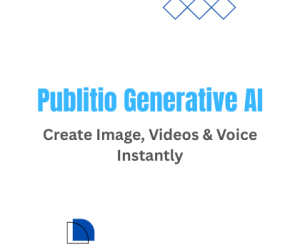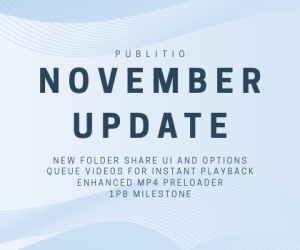Artificial Intelligence (AI) is poised to disrupt asset management by unlocking a new set of advanced capabilities that were initially unattainable. By automating asset tagging, AI makes it possible to process thousands of new and existing assets within hours, a process that would otherwise take weeks if done manually.
While using AI to suggest relevant metadata is a huge step in the right direction, human verification is still critical in evaluating the levels of accuracy and relevance to the business. That said, as enterprises implement AI into DAM systems, care needs to be taken so that asset data becomes more meaningful.
In this post, we will explore best practices for implementing AI in a digital asset management system, as well as what AI can offer for DAM systems. Let’s dig in.
Best practices for implementing AI in DAM
Separate AI-generated Metadata from Human-generated Metadata
AI-generated metadata should be kept separate from your human-generated metadata. You should be able to toggle on or off the availability of AI-generated metadata. This way, administrators or users will decide if they will use it or leave it when doing a search.
The primary purpose of separating this two metadata is to ensure the quality of existing metadata isn’t corrupted by the one generated from the AI service. This is critical, especially when piloting machine learning services. Administrators can evaluate the quality of the AI metadata before allowing users to include them in the searches.
Track AI Providers as a User
DAM systems have the capability of tracking actions taken by every user, and AI should not be an exception. The awesome thing about tracking your AI just like any other use is that it allows all actions executed to be tracked and audited. And this is critical for enterprises that may be interested in using several AI services.
For instance, if you are using Google Vision for one set of metadata, and Microsoft Cognitive Services for the other, creating different user accounts for each is preferable. This way, you can isolate the metadata and audit the services independently.
Track AI Providers by Feature
When implementing an AI service into a DAM, separating the services by features or projects is essential. This way, you associate test data and training data with particular attributes.
For example, if you have a test data that identifies phones for your AI service, you would need to define a Cognitive Metadata Attribute named “Phones” to correspond to the respective AI project. You can also come up with a Cognitive Metadata Attribute that is more general, like “Keywords”. This will associate with the untrained auto-tagging features being provided by the AI service.
This separation of services allows the transfer of the dataset to another service provider in case you are dissatisfied with the results of that particular feature.
Ensure AI-generated Metadata is Filterable
Users should be able to search for assets using filters that are AI-specific. Examples of such filters include AI provider, model version, and API version and prediction date. Companies have different policies, and depending on the organization, users should be in a position to increase or decrease the confidence level acceptable for any search.
If, for example, a user searches using “Cat” as the keyword, they can then filter it only to display results that have been tagged using an AI service, and have a confidence level of 90% and above.
AI-Generated Metadata Should be Convertible
Most DAMs can allow embedded metadata to get converted into regular asset attributes such as keywords. Auto-tags should have this capability too. When implementing AI into a DAM, it is important to set rules so that if you generated a tag with a high confidence level, the system automatically converts it into a general keyword. This way, it will still be available even when the AI service is toggled off.
For instance, you can set up your AI with a rule such as “Any auto-tag with a confidence level of 99.9% and above should be converted into a keyword.”
AI Should Improve Over Time
AI comes with the benefit of improving performance progressively on a specific task. The more data you get, the more you are able to retrain the model and get better precision.
This means deleted/incorrect auto-tags in the model are treated as negative feedback, and confirmations treated as positive feedback. The model can be retrained manually or automatically triggered after the DAM has collected a certain amount of asset data points.
However, this capability only applies when you are using a specialized or guided machine learning service, where the model belongs to you, and you can supply it with the right information.
Put a strong emphasis on training
When implementing an AI into a DAM, everybody who will use the solution should be trained on how to handle it. Comprehensive training should be done for users and administrators who will be doing the bulk of the work, such as organizing assets and capturing metadata.
What are the benefits of AI in DAM?
AI bolsters automation and supercharges asset-tagging
More capable autonomous DAM systems are gradually coming into existence. Through sophisticated tools such as speech to text and automatic language, AI engines bring new power to DAM systems. You can tag assets automatically using attributes like places, things, and people.
AI improves accuracy
It’s no secret that marketers spend hours on end trying to gain insights into their target audience, and in the past, availability of quality data has been a concern. Robust AI data analytics opens doors for marketers to understand their target market at a deeper level.
Final word
The future is quite promising for AI-powered DAM systems, and the capability mentioned above is just the tip of the iceberg. In this post, we have also highlighted the best practices that help you implement an AI into your DAM system.
On the automation front, robust DAM systems such as Publit.io come in handy in feeding the AI engines with the right data and automate the analysis, while keeping your costs low. Only flexible, easy-to-integrate, and scalable DAM platforms will enable media operation to reap maximum benefits from AI.
Can’t wait to hear your thoughts in the comments below!




